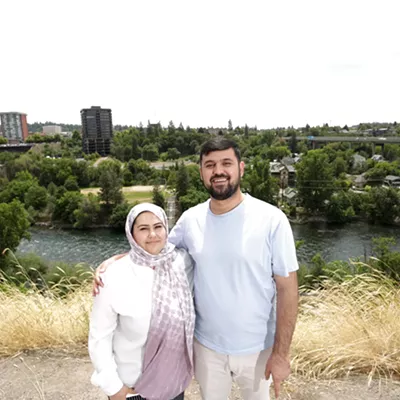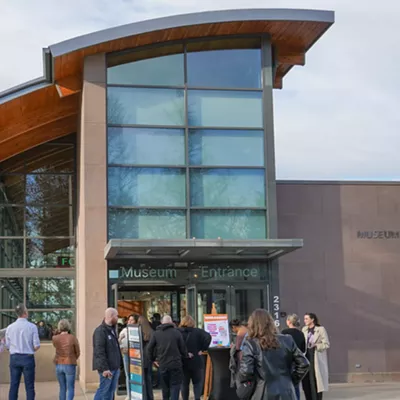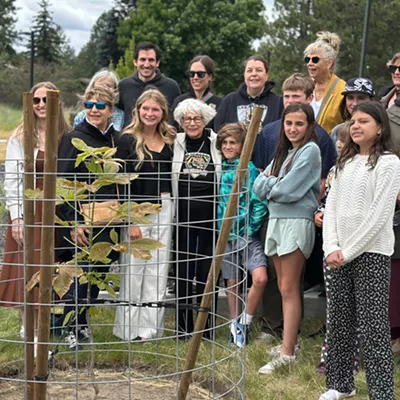Today, thanks to the widespread publication of the Lewis and Clark journals, the observations of the men of the Corps of Discovery are still very relevant. It sounds strange to say, but reading the 200-year old journals seems to bring out a "detective" gene in armchair historians. After reading certain passages, people instinctively want to dig beneath the obvious and ponder, question, seek additional information and, sometimes, observe the site for themselves. For example, after reading journal entries that describe Palouse Canyon, the rocky course of the Snake River, Wallula Gap and the Columbia River Gorge, many readers familiar with Pacific Northwest geology realize that Lewis and Clark are describing the effects of the post-Ice Age floods that sculpted the landscape of Washington some 12,800 years ago.
The beauty of the Lewis and Clark journals is that the writers described not only what they saw and understood, but also what they saw and did not understand. Passages remain today just waiting to be figured out and enhanced. Thus, in 2005, people can read the captain's words from 1805 and, using the vast store of knowledge that has been uncovered over the past two centuries, it's possible to expand those journal entries, to make them personal, to see the landmarks with fresh eyes.
When they began their journey up the Missouri River on May 14, 1804, Lewis and Clark had the benefit of maps and information that Lewis had coaxed out of experienced fur traders in St. Louis. Later, as the Corps of Discovery pushed, pulled and poled its keelboat and two pirogues on the Missouri, itinerant fur men joined them several times on the upriver journey as guides. During the long winter of 163 days with the Mandan Indians in present-day North Dakota, Lewis and Clark assembled quite a bit of information from the natives about the character of the Missouri River. Thus, when they resumed their trek westward on April 7, 1805, the leaders of the Corps of Discovery had some idea of what to expect.
Information supplied by the Indians, however, took the Corps of Discovery only as far as the Great Falls of the Missouri. After that, they were on their own. They wished to contact other Indians, but neither signals nor scouts could locate tribesmen. Lewis and Clark, therefore, had to make their own decisions when the Missouri split into Three Forks and when the Rocky Mountains seemingly blocked their movement west.
The "evidence" in the Lewis and Clark detective story becomes more difficult to decipher once the expedition crosses the Continental Divide into present-day Idaho. Their route is no longer straightforward, as in "just follow the Missouri River." Even more challenging are relations with the Native Americans, for three Western tribes had not yet made contact with Euro-Americans. Once across the Continental Divide, Lewis and Clark needed experienced guides more than ever to facilitate their journey. The same is true for 21st-century armchair travelers. Employing a guide is a practice, I suspect, that Lewis and Clark would recommend, because the route of the Corps of Discovery across Idaho and Washington is filled with surprises and sometimes misunderstood moments.
In the coming months, readers of The Inlander will be guided along the Lewis and Clark Trail in a series of weekly chapters that will take them, in their mind's eye, over Lemhi, Lost Trail and Lolo passes on horseback, then down the Clearwater, Snake and Columbia rivers in canoes to the Pacific Ocean. Enjoy the ride!
For more Lewis & amp; Clark Coverage see this weeks & lt;a href= "http://www.inlander.com/localnews/localnews.php " & news & lt;/a & section.
ABOUT THE AUTHOR & r & Robert Carriker is the Alphonse and Geraldine Arnold Distinguished Professor of the College of Arts and Sciences at Gonzaga University. His most recent book on the Lewis and Clark Expedition is Ocian in View!: Lewis & amp; Clark in Washington State (2005). He is a co-author of America Looks West: Lewis and Clark on the Missouri (2002). Carriker has also written new introductions to previously published books: George Drouillard: Hunter and Interpreter for Lewis & amp; Clark (2003) and The Natural History of the Lewis and Clark Expedition (1995). Between 1985 and 2003, Dr. Carriker directed eight National Endowment for the Humanities seminars on the Corps of Discovery, each of which included travel on the Lewis and Clark National Historic Trail. He is the book review editor for Columbia magazine, a quarterly publication of the Washington State Historical Society.
















